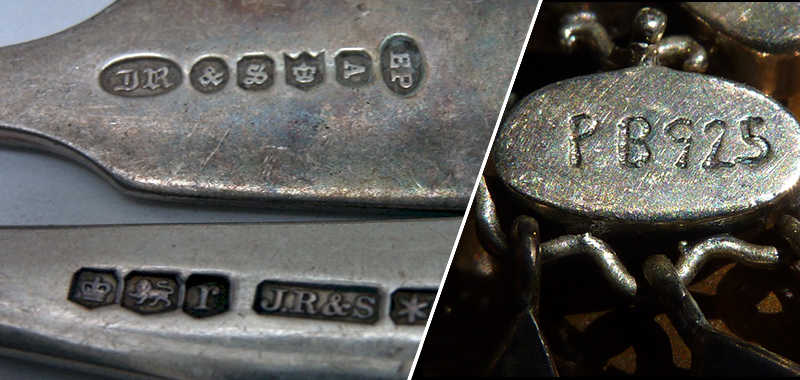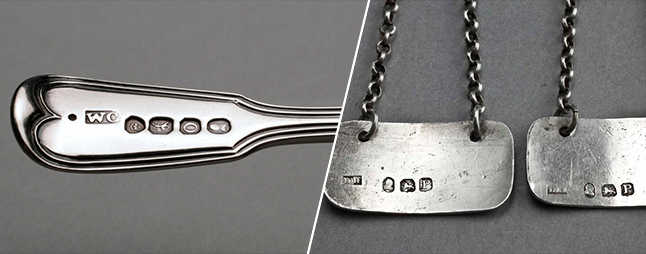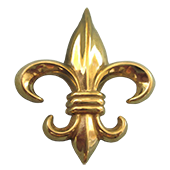Silver Markings: What do they Mean and How do I find Out
- Posted on 17th February 2023
- in Antique Silver, antique sterling silver, Chinese Silver, Christofle Silver, Hallmarks, Silver Markings
- by Alan
What are Silver Markings and How Do You Read Silver Hallmarks?
Silver markings are stamped or engraved markings on silver objects that provide information about the quality, authenticity, and origin of the silver. These markings are also known as silver hallmarks and are a way to verify the purity of silver and ensure that the piece is authentic.
The most common type of silver marking is the “sterling” mark, which indicates that the silver is of 92.5% purity or higher. Other marks may indicate the maker or manufacturer of the piece, the city or country of origin, and the year in which the piece was made.
To read silver hallmarks, you need to understand the different symbols and letters that are used. The most common symbols include:
• A lion passant: This indicates that the silver is of British origin and is of at least 92.5% purity.
• A crown or a set of scales: This is the mark of the Assay Office, which tests and verifies the purity of silver in the UK.
• A maker’s mark: This is the mark of the manufacturer or silversmith who made the piece.
• A date letter: This indicates the year in which the piece was made.
• A purity mark: This indicates the purity of the silver, which can be expressed in various ways depending on the country of origin.
To decipher the markings on a piece of silver, you will need to refer to a guide or reference book that provides information on the various symbols and letters used in silver hallmarks. With this knowledge, you can determine the origin and quality of the silver and verify that the object is genuine and valuable.
Have you ever wondered what the tiny words or numbers mean on the jewelry or silver that you own or that has been passed down in your family? The silver that is in your cabinet space and that you have been holding onto for years has a unique story to tell. It is okay that you are not an expert in determining exactly how those stories are based on the precious metals. Luckily, that story can be figured out thanks to the silver markings, that are put on the silver when you know where to look.
Luckily, there was a time when marks on precious metals became regulated. This time dates back to ancient times—from pharaohs, Roman emperors, and other famous leaders from ancient time periods—all the way to present time. Since regulation has gone on since the very beginning, the production of silver has been highly regulated so that as a buyer, you were guaranteed to know the maker, origin, and date of any piece of silver that you purchased. Antique silver hallmarks are especially helpful when you are trying to figure out if what you own is actually made of silver or not.
Digits and Silver Quality

Antique silver marks should have three numbers that are etched or engraved somewhere on them. When you turn over a piece of antique silver to check the markings, those numbers will tell you the actual amount of silver and the purity of the silver that is present in the item that you have. The stamping indicates who the silversmith is, the date of manufacture, and other information about the piece that is necessary to its manufacturing.
Any piece of silver that has more than 92.5 percent silver is considered sterling silver or pure silver. Fine silver is defined as having a silver markings percentage of 99.9% or higher. Therefore, you will be able to look and see “925” or “999” on pieces of silver. Those digits are highly important in determining the quality of silver that you actually have on hand. Sometimes, a piece of silver will also include an “FS.” That marking is short for “fine silver” and means that there are 999 parts per thousand of silver metal within the item that you have.
Where it’s From
Certain markings on silver indicate where the silver originated from or where it was manufactured. For example, the lion marking indicates British sterling, and since the mark has changed over the years, the lion mark actually indicates a specific time period of silver dating. Some marks are also specific enough that you can tell the city that the silver came from.
American silver marks are indicated at a minimum of 925 for every 1000 parts of silver material. This means, that a silver based item must have less than 7.5% base metal in order for the ratio to be considered within the sterling standard. This practice has been used in the United States since the 1860s.
Initials are also used in some silver markings to indicate who the manufacturer is for the silver or who designed the piece. For more in depth information on determining a silver’s origin based on unique marks, check out this site: http://www.925-1000.com/foreign_marks.html
What to Beware Of

There are absolutely faux hallmarks that are out there that you definitely need to be aware of whenever you are purchasing silver. Beyond faux hallmarks, there are terms that are purposely misleading to a customer in regards to whether or not a piece of antique silver is actually sterling. There are terms such as “sterling inlaid” and “silver soldered” that attempt to be portrayed as sterling silver pieces when in reality, they are not and the additional terms are misleading. Beware of a piece of silver that doesn’t just have the word “sterling” by itself.
Since the globalization of commerce, nations have been prompted to use the same units of weight, measure, and standard to increase trade standards between countries and the value of the silver that is produced and sold. At Sarasota Antique Buyers, we know where to look and we are able to tell you what those antique silver marks mean.
Our expert teams are ready to help you discover your silver’s story. We have the knowledge that is necessary to determine troy ounces. We have the knowledge that is necessary to determine the purity of your silver. We can also weigh your silver on an electronic scale, which should be able to tell you in grams, for the conversion into troy ounces. Bring your antique silver into Sarasota Antique Buyers so that our team can take a look at your silver pieces and tell you what those antique silver marks really mean and the value of their silver.
Related Posts:
